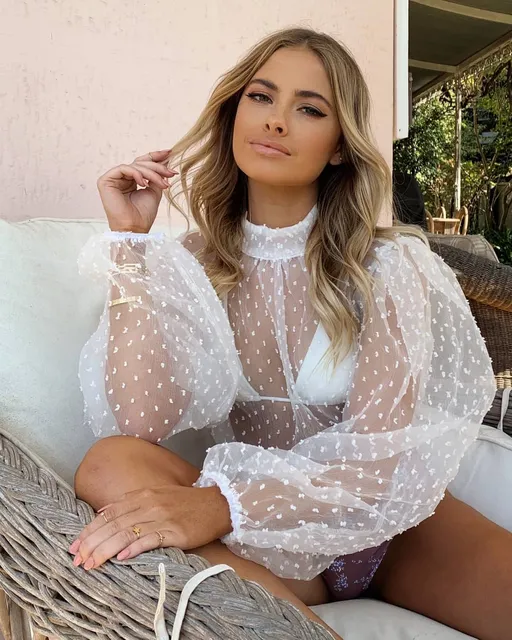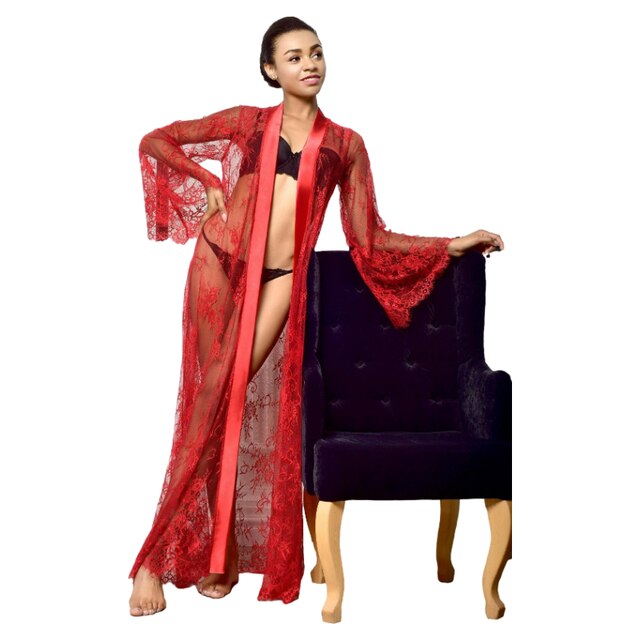
See-through outfits have long been a symbol of confidence, sensuality, and daring fashion. When done right, they can exude elegance and allure. Whether you’re preparing for a special occasion or simply looking to add a touch of intrigue to your wardrobe, choosing the right is essential. In this comprehensive guide, we’ll explore the world of see-through fashion, covering factors like fabric, occasion, styling, and more, to help you confidently embrace this captivating style.
The Allure of See-Through Fashion
Before we delve into the specifics of choosing a sheer clothes, it’s crucial to understand the allure of this style:
- Confidence: Wearing see-through garments often requires a certain level of confidence and self-assuredness. It’s a bold and daring fashion choice that can make you feel empowered and in control of your style.
- Sensuality: Sheer fabrics have an inherent sensuality to them. They allow you to reveal just enough to tantalize without giving away everything, making them ideal for romantic or intimate occasions.
- Versatility: See-through outfits are incredibly versatile. Depending on how you style them, they can be appropriate for casual, semi-formal, or formal occasions.
- Personal Expression: Choosing it allows you to express your individual style and creativity. It’s an opportunity to make a unique fashion statement.
Now, let’s explore the factors to consider when selecting the perfect one.
Factors to Consider When Choosing a See-Through Outfit
1. Occasion
The occasion plays a significant role in determining the suitability of a see-through outfit. Here are some considerations:
- Casual Wear: For everyday or casual occasions, opt for subtle sheer elements, such as a sheer top layered over a camisole or a see-through blouse with a tank underneath.
- Semi-Formal: For semi-formal events, you can experiment with more elaborate see-through designs, like a sheer dress with a lining that hits mid-thigh or a sheer skirt with an opaque top.
- Formal Events: For formal occasions, consider full-length sheer gowns or dresses with strategically placed sheer panels for a sophisticated and elegant look.
2. Fabric
The choice of fabric is crucial in see-through fashion. Different fabrics offer varying levels of sheerness and comfort. Common sheer fabrics include:
- Chiffon: Chiffon is lightweight and delicate, providing a soft and airy look. It’s a popular choice for see-through blouses, dresses, and scarves.
- Tulle: Tulle is a fine, net-like fabric often used in tutus and ballerina skirts. It adds volume and texture to see-through garments when layered.
- Lace: Lace is a classic choice for see-through fashion. It comes in various patterns and can be used for both subtle and bold looks.
- Mesh: Mesh fabrics offer a sporty and contemporary vibe. They are often used for see-through tops, bodysuits, and athleisure wear.
- Organza: Organza is a crisp and transparent fabric that can create a dramatic see-through effect. It’s ideal for structured sheer garments.
Choose a fabric that aligns with your comfort level and the style you want to achieve. Some see-through fabrics are more breathable and lightweight, while others may feel more substantial.
3. Layering
Layering is key to making see-through outfits wearable in different contexts. Here are some layering options:
- Camisoles or Tank Tops: These are essential for providing coverage underneath sheer tops or blouses.
- Slips or Bodysuits: A slip dress or a bodysuit can be worn under sheer dresses or skirts to maintain modesty.
- Bras and Undergarments: Consider the type and color of bras and undergarments you plan to wear with your clothing. Nude or seamless options are often the best choices.
4. Color
The color of your see-through outfit can significantly impact its overall look. Here are some considerations:
- Monochromatic: A sheer clothe in a single color, such as all black or all white, can create a sleek and sophisticated appearance.
- Contrast: Contrasting colors, like a black see-through top over a white bralette or a brightly colored sheer dress with a neutral slip, can make a bold statement.
- Nude or Neutral: Nude or neutral tones can create a seamless and understated look. They give the illusion of bare skin while providing coverage.
- Prints: Some see-through fabrics come with prints or patterns, adding visual interest to your outfit. These can be a fun choice for casual occasions.
5. Silhouette
Consider the silhouette and fit of your see-through outfit. Different styles can create varying effects:
- Loose and Flowy: Loose and flowy see-through garments can create an ethereal and romantic look, perfect for beach outings or casual gatherings.
- Form-Fitting: Form-fitting see-through outfits can accentuate your curves and create a sultry, body-hugging effect.
- Structured: Structured, like tailored sheer blazers or coats, offer a polished and sophisticated appearance.
- Layered: Experiment with layering see-through pieces, such as a sheer blouse over a tank top or a sheer kimono over a swimsuit for added dimension.
6. Comfort and Confidence
Comfort and confidence are key when wearing see-through outfits. Ensure that you feel at ease in your chosen outfit and that it aligns with your personal style and level of daring. Confidence is the ultimate accessory that can elevate any see-through look.
7. Styling and Accessories
Pay attention to styling and accessories to complete your see-through outfit:
- Footwear: Choose shoes that complement the occasion and style of your outfit. Heels can add elegance, while sneakers create a casual and contemporary vibe.
- Jewelry: Minimalist or statement jewelry can enhance your outfit’s overall look. Consider layering necklaces or adding bold earrings to draw attention.
- Outerwear: Depending on the weather and occasion, have a complementary outerwear piece, such as a blazer, cardigan, or jacket, to wear over your see-through outfit.
- Hair and Makeup: Your hairstyle and makeup can significantly influence your overall look. Experiment with different hairdos and makeup styles to enhance your outfit’s vibe.
How to Care for Your See-Through Outfit
Once you’ve chosen the perfect see-through outfit, proper care is essential to maintain its appearance and longevity:
- Hand Wash or Delicate Cycle: Many see-through fabrics are delicate and may require hand washing or the delicate cycle on your washing machine. Use a gentle detergent.
- Dry Cleaning: For more structured see-through garments or those with intricate details, consider dry cleaning to ensure they retain their shape and quality.
- Storage: Store your see-through outfits separately from other clothing to prevent snagging or damage to delicate fabrics.
- Repair: Address any snags or loose threads promptly to prevent further damage. Consider consulting a professional for intricate repairs.
In Conclusion
Choosing the right see-through outfit is an opportunity to express your style, confidence, and sensuality. By considering factors like fabric, occasion, layering, color, silhouette, comfort, and styling, you can confidently embrace the world of see-through fashion. Whether you’re dressing for a special event or incorporating see-through elements into your daily wardrobe, this captivating style allows you to make a bold and unique fashion statement, leaving an unforgettable impression wherever you go.


